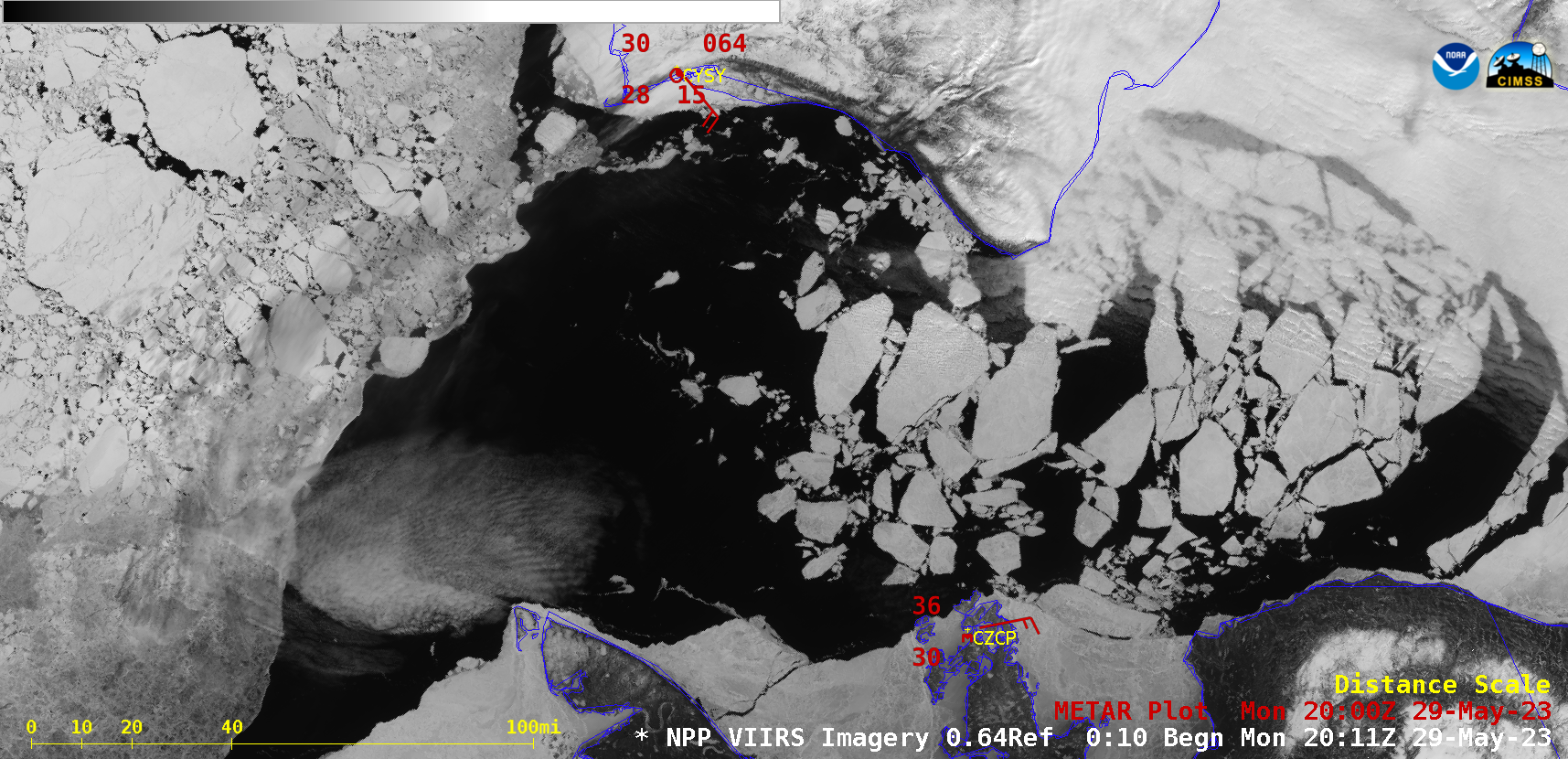Anomalously low ice concentration in Canada’s Amundsen Gulf

Suomi-NPP VIIRS Visible (0.64 µm) images, 26-29 May [click to play animated GIF | MP4]
Much of this fast ice separation was the result of wind stress, shown by the easterly/northeasterly winds that prevailed during the period at Cape Perry CZCP — which included gusts in excess of 30 knots on 27 May as an anomalously deep low pressure moved eastward across the Northwest Territories into Nunavut (not surprisingly, the most significant areal extent of fast ice separation also occurred on 27 May).
A comparison of Suomi-NPP VIIRS Sea Ice Concentration, Sea Ice Thickness and Sea Ice Temperature derived products viewed using RealEarth (below) showed ice conditions on Day 1 of this 4-day period, before the stronger easterly winds on Day 2 led to more widespread development of ice leads and a separation of fast ice.
Probed values of those parameters over an area of fast ice that had not yet been fractured and separated (below) indicated a Sea Ice Thickness of 1.57 m, a Sea Ice Temperature of 269.14 K and a Sea Ice Concentration of 99% at that particular location.


